Showing Spotlights 385 - 392 of 559 in category All (newest first):
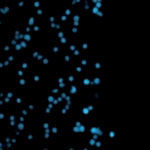 Metastasis is caused by marauding tumor cells that break off from the primary tumor site and ride in the bloodstream to set up colonies in other parts of the body. These breakaway cancer cells in the peripheral blood are known as circulating tumor cells (CTCs). Detecting and analyzing these cells can provide critical information for managing the spread of cancer and monitoring the effectiveness of therapies. Nanotechnology researchers have now developed a an efficient cell-capture platform based on 3D nanostructured substrates. The device is engineered out of nanoscale silicon pillars and has managed to capture up to 65 percent of circulating tumor cells in lab samples within human blood - far more than any existing diagnosis tool for CTC capture.
Metastasis is caused by marauding tumor cells that break off from the primary tumor site and ride in the bloodstream to set up colonies in other parts of the body. These breakaway cancer cells in the peripheral blood are known as circulating tumor cells (CTCs). Detecting and analyzing these cells can provide critical information for managing the spread of cancer and monitoring the effectiveness of therapies. Nanotechnology researchers have now developed a an efficient cell-capture platform based on 3D nanostructured substrates. The device is engineered out of nanoscale silicon pillars and has managed to capture up to 65 percent of circulating tumor cells in lab samples within human blood - far more than any existing diagnosis tool for CTC capture.
Nov 30th, 2009
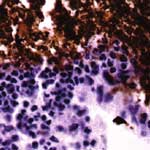 Quite a number of serious medical conditions, such as cancer, diabetes and chronic pain, require medications that cannot be taken orally, but must be dosed intermittently, on an as-needed basis, and over a long period of time. By combining magnetism with nanotechnology, researchers have now created a small implantable device that encapsulates the drug in a specially engineered membrane, embedded with magnetic iron oxide nanoparticles. The application of an external, alternating magnetic field heats the magnetic nanoparticles, causing the gels in the membrane to warm and temporarily collapse. This collapse opens up pores that allow the drug to pass through and into the body. When the magnetic field is turned off, the membranes cool and the gels re-expand, closing the pores and halting drug delivery. No implanted electronics are required.
Quite a number of serious medical conditions, such as cancer, diabetes and chronic pain, require medications that cannot be taken orally, but must be dosed intermittently, on an as-needed basis, and over a long period of time. By combining magnetism with nanotechnology, researchers have now created a small implantable device that encapsulates the drug in a specially engineered membrane, embedded with magnetic iron oxide nanoparticles. The application of an external, alternating magnetic field heats the magnetic nanoparticles, causing the gels in the membrane to warm and temporarily collapse. This collapse opens up pores that allow the drug to pass through and into the body. When the magnetic field is turned off, the membranes cool and the gels re-expand, closing the pores and halting drug delivery. No implanted electronics are required.
Nov 16th, 2009
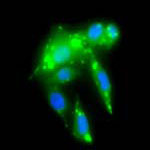 One of the promises of medical nanotechnology is a drug-delivery nanodevice that can image, target, and deliver drugs to a specific cancer location inside the body and monitor and if necessary adjust the drug release at the target location. Researchers in Taiwan have now designed a nanodevice that comes pretty close to this vision. They have successfully demonstrated that our multifunctional drug-delivery nanodevice - a polymer core/single-crystal iron oxide shell nanostructure bonded to a quantum dot - can image, target, and deliver drugs via remote control. The device shows outstanding release and retention characteristics via an external on/off manipulation of a high-frequency magnetic field. Furthermore, the quantum dot bonded to the nanodevice provides optical information for in situ monitoring of the drug release.
One of the promises of medical nanotechnology is a drug-delivery nanodevice that can image, target, and deliver drugs to a specific cancer location inside the body and monitor and if necessary adjust the drug release at the target location. Researchers in Taiwan have now designed a nanodevice that comes pretty close to this vision. They have successfully demonstrated that our multifunctional drug-delivery nanodevice - a polymer core/single-crystal iron oxide shell nanostructure bonded to a quantum dot - can image, target, and deliver drugs via remote control. The device shows outstanding release and retention characteristics via an external on/off manipulation of a high-frequency magnetic field. Furthermore, the quantum dot bonded to the nanodevice provides optical information for in situ monitoring of the drug release.
Nov 9th, 2009
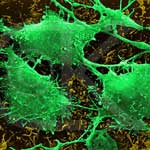 Detection at the earliest stage provides the greatest chance of survival for cancer patients. Cancer has a logarithmic growth rate and doctors typically don't see 80% of the life of a tumor. Detection can be done using a number of techniques including standard immunoassays and biopsies. Nanotechnology offers new detection approaches such as targeted contrast agents, nanoscale cantilevers coated with antibodies against tumor markers, and magnetic nanoparticles coated with DNA labeling. But the problem is daunting because there are over 50 common types of cancer and in practice it is difficult to ask people to come to the clinic on a regular basis for cancer screening. Researchers have now proposed a new method for the detection of cancer cells based on measurement of the physical adhesion of silica beads to malignant versus normal cells cultured from human cervix.
Detection at the earliest stage provides the greatest chance of survival for cancer patients. Cancer has a logarithmic growth rate and doctors typically don't see 80% of the life of a tumor. Detection can be done using a number of techniques including standard immunoassays and biopsies. Nanotechnology offers new detection approaches such as targeted contrast agents, nanoscale cantilevers coated with antibodies against tumor markers, and magnetic nanoparticles coated with DNA labeling. But the problem is daunting because there are over 50 common types of cancer and in practice it is difficult to ask people to come to the clinic on a regular basis for cancer screening. Researchers have now proposed a new method for the detection of cancer cells based on measurement of the physical adhesion of silica beads to malignant versus normal cells cultured from human cervix.
Oct 16th, 2009
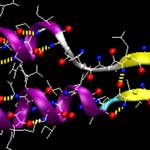 In animal cells, the well known cytoskeletal proteins actin microfilaments and microtubules are accompanied by a third filament system that in humans consist of a family of more than 70 proteins. These fibrous proteins are absent from both plants and fungi, and have been linked to serious human diseases including cancer, muscle dystrophies and rapid aging disease. Their name, intermediate filament, was coined back in 1978 because their diameters - about 10 nanometers - appeared to be intermediate in size between those of microtubules and microfilaments. Their atomistic-level molecular structure remains elusive, and as a consequence, the understanding of the biological role in physiological and disease states is still in its infancy. Researchers now report a breakthrough in explaining the structural and mechanistic origin of the unique mechanical properties of intermediate filaments. By combining atomistic and molecular modeling with experimental studies, the researchers report a multi-scale analysis that showed that the mechanical properties of intermediate filaments are controlled by their characteristic hierarchical makeup.
In animal cells, the well known cytoskeletal proteins actin microfilaments and microtubules are accompanied by a third filament system that in humans consist of a family of more than 70 proteins. These fibrous proteins are absent from both plants and fungi, and have been linked to serious human diseases including cancer, muscle dystrophies and rapid aging disease. Their name, intermediate filament, was coined back in 1978 because their diameters - about 10 nanometers - appeared to be intermediate in size between those of microtubules and microfilaments. Their atomistic-level molecular structure remains elusive, and as a consequence, the understanding of the biological role in physiological and disease states is still in its infancy. Researchers now report a breakthrough in explaining the structural and mechanistic origin of the unique mechanical properties of intermediate filaments. By combining atomistic and molecular modeling with experimental studies, the researchers report a multi-scale analysis that showed that the mechanical properties of intermediate filaments are controlled by their characteristic hierarchical makeup.
Oct 13th, 2009
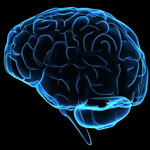 Here is a no-brainer (excuse the pun): If you had brain tumor, would you rather receive your medicine through an injection in the arm or have a hole drilled in your skull? Even if you opted for the 'hole-in-the-skull' method, brain cancers are often inoperable due to their location within critical brain regions or because they are too small to detect. Nanotechnology offers a vision for a smart drug approach to fighting tumors: the ability of nanoparticles to locate cancer cells and destroy them with single-cell precision. One of the most important applications for such nanoparticulate drug delivery could be the delivery of the drug payload into the brain. However, crossing the brains protective shield, the blood-brain barrier, is a considerable challenge. Novel targeted nanomedicine drug delivery systems that are able to cross this barrier bring us closer to this vision of brain cancer destroying drugs.
Here is a no-brainer (excuse the pun): If you had brain tumor, would you rather receive your medicine through an injection in the arm or have a hole drilled in your skull? Even if you opted for the 'hole-in-the-skull' method, brain cancers are often inoperable due to their location within critical brain regions or because they are too small to detect. Nanotechnology offers a vision for a smart drug approach to fighting tumors: the ability of nanoparticles to locate cancer cells and destroy them with single-cell precision. One of the most important applications for such nanoparticulate drug delivery could be the delivery of the drug payload into the brain. However, crossing the brains protective shield, the blood-brain barrier, is a considerable challenge. Novel targeted nanomedicine drug delivery systems that are able to cross this barrier bring us closer to this vision of brain cancer destroying drugs.
Oct 7th, 2009
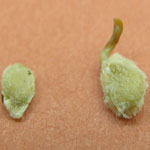 To what degree nanoparticles are uptaken by plants and what their effect is on plant development is an important issue in determining the environmental impact of nanomaterials. Previously we have covered several research projects that have begun to explore nanotechnology's impact on major food crops and some of them have demonstrated quite a negative impact. But some research results also show a possible positive effect, like a recent study that demonstrates that carbon nanotubes (CNTs) can dramatically accelerate the germination and growth of tomato seeds. Work like this contributes to an important body of interdisciplinary research where nanotechnology, plant biology and biotechnology converge to open new perspectives for solving some of the important challenges of our times such as increased food and biofuel production.
To what degree nanoparticles are uptaken by plants and what their effect is on plant development is an important issue in determining the environmental impact of nanomaterials. Previously we have covered several research projects that have begun to explore nanotechnology's impact on major food crops and some of them have demonstrated quite a negative impact. But some research results also show a possible positive effect, like a recent study that demonstrates that carbon nanotubes (CNTs) can dramatically accelerate the germination and growth of tomato seeds. Work like this contributes to an important body of interdisciplinary research where nanotechnology, plant biology and biotechnology converge to open new perspectives for solving some of the important challenges of our times such as increased food and biofuel production.
Sep 29th, 2009
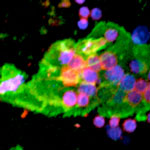 Bionanotechnology researchers are experimenting with techniques for attaching DNA nanoarrays to cell surfaces for various reasons: to label cell surfaces with functionalized micrometer-sized patches; to deliver materials such as nanoparticles or carbon nanotubes to cell surfaces; to deliver nucleic acids into the cell for gene silencing; or to engineer microtissues of cell/cell networks by using self-hybridizing properties of single stranded DNA molecules. A team of scientists in California has now successfully attached self-assembled DNA structures to cancer cells using two different methods. This is one of the first illustrations of the biomedical relevance of DNA arrays.
Bionanotechnology researchers are experimenting with techniques for attaching DNA nanoarrays to cell surfaces for various reasons: to label cell surfaces with functionalized micrometer-sized patches; to deliver materials such as nanoparticles or carbon nanotubes to cell surfaces; to deliver nucleic acids into the cell for gene silencing; or to engineer microtissues of cell/cell networks by using self-hybridizing properties of single stranded DNA molecules. A team of scientists in California has now successfully attached self-assembled DNA structures to cancer cells using two different methods. This is one of the first illustrations of the biomedical relevance of DNA arrays.
Sep 22nd, 2009
 Metastasis is caused by marauding tumor cells that break off from the primary tumor site and ride in the bloodstream to set up colonies in other parts of the body. These breakaway cancer cells in the peripheral blood are known as circulating tumor cells (CTCs). Detecting and analyzing these cells can provide critical information for managing the spread of cancer and monitoring the effectiveness of therapies. Nanotechnology researchers have now developed a an efficient cell-capture platform based on 3D nanostructured substrates. The device is engineered out of nanoscale silicon pillars and has managed to capture up to 65 percent of circulating tumor cells in lab samples within human blood - far more than any existing diagnosis tool for CTC capture.
Metastasis is caused by marauding tumor cells that break off from the primary tumor site and ride in the bloodstream to set up colonies in other parts of the body. These breakaway cancer cells in the peripheral blood are known as circulating tumor cells (CTCs). Detecting and analyzing these cells can provide critical information for managing the spread of cancer and monitoring the effectiveness of therapies. Nanotechnology researchers have now developed a an efficient cell-capture platform based on 3D nanostructured substrates. The device is engineered out of nanoscale silicon pillars and has managed to capture up to 65 percent of circulating tumor cells in lab samples within human blood - far more than any existing diagnosis tool for CTC capture.
 Subscribe to our Nanotechnology Spotlight feed
Subscribe to our Nanotechnology Spotlight feed





